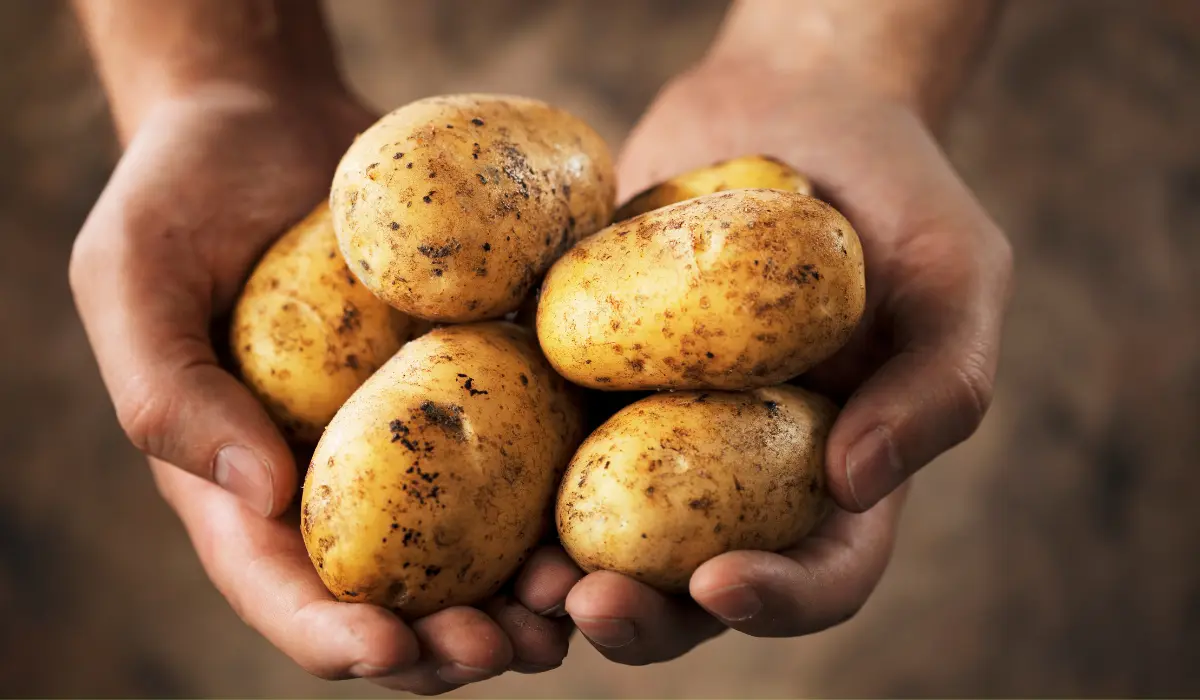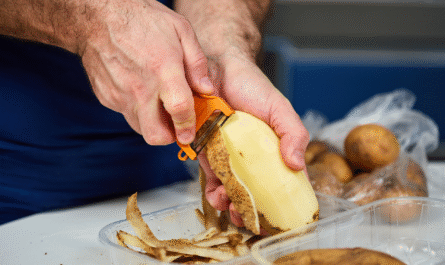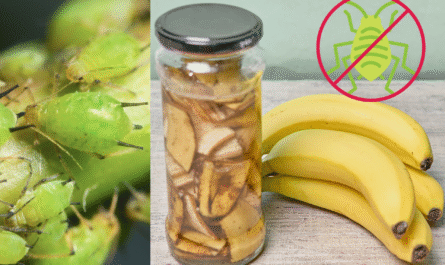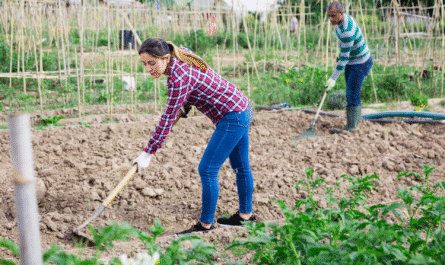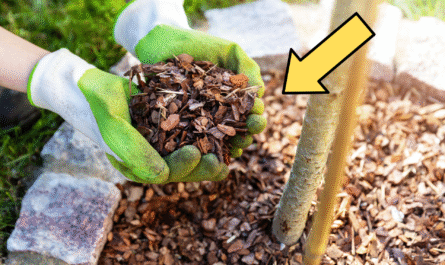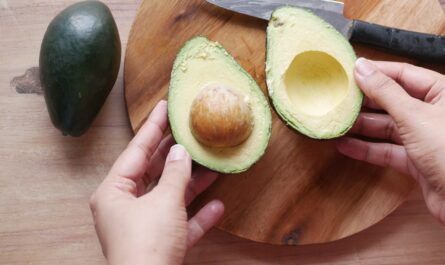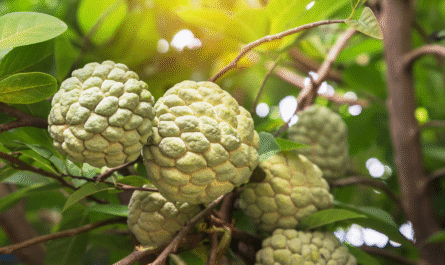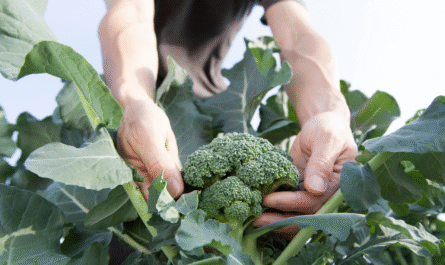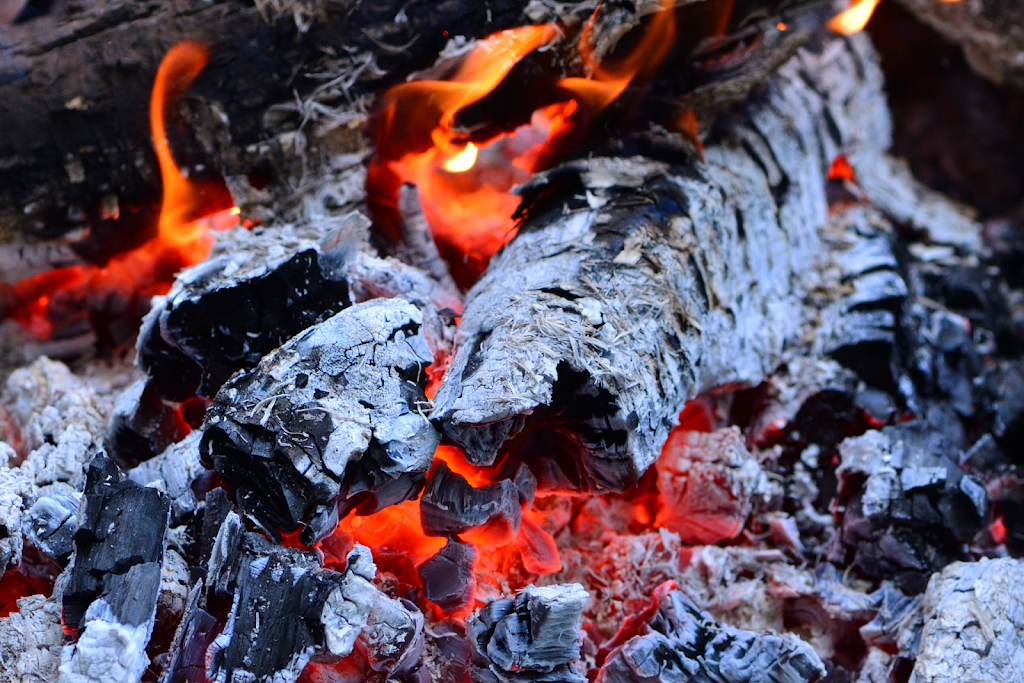Not long ago, I found myself staring at an overflowing pantry full of potatoes. I had overestimated just how many I’d need for a dinner party, and suddenly I was on the clock: eat them all before they sprouted or figure out a better way to save them.
That’s when I started experimenting with freezing. Like many people, I had always heard that potatoes don’t freeze well because they turn mushy and grainy once thawed. But I quickly learned that the problem isn’t freezing itself, it’s freezing them raw.
The truth is, potatoes can absolutely be frozen and still taste amazing. The secret lies in cooking or parcooking them before they go into the freezer.
Once I understood this, my freezer turned into a treasure chest of ready-to-cook potatoes, mashed, diced, shredded, and even fries, all waiting to become part of my favorite meals without extra hassle.
Why Freezing Potatoes Works
Potatoes are full of water, and water is what complicates freezing. When you freeze raw potatoes, that water turns into sharp ice crystals.
Those crystals rupture the potato’s delicate cell walls, which is why raw frozen potatoes thaw into a watery, mushy mess. That’s what gave freezing potatoes such a bad reputation for so long.
But cooking changes the story. Heat causes starches in potatoes to gelatinize and proteins to set, essentially giving them more structure before they’re frozen.
This means that even when ice crystals form during freezing, the overall shape and texture of the potato hold up far better. It’s the same principle that makes frozen cooked vegetables taste better than frozen raw ones.
By parcooking or fully cooking potatoes before freezing, you’re locking in texture and preserving flavor. When you pull them out later, you can reheat or finish cooking without dealing with that dreaded mush.
For me, it was a revelation that opened up all kinds of possibilities, from freezer-friendly mashed potatoes to crispy fries straight from frozen.
The Benefits of Freezing Potatoes
The most obvious benefit is shelf life. Even under ideal storage conditions, cool, dark, and well-ventilated, a raw potato has maybe two months before it starts sprouting, softening, or developing dark spots.
Once cooked, potatoes last just a few days in the fridge. But in the freezer, cooked potatoes can last up to a year while still tasting fresh. That means I can buy big bags of potatoes on sale without worrying about waste.
Convenience is another huge advantage. On busy mornings, I don’t want to peel and shred potatoes from scratch for hash browns. If I’ve already done the prep work, I can just toss frozen shredded potatoes into a skillet and have breakfast on the table in minutes.
The same goes for dinners. Having frozen casseroles or diced potatoes ready to go makes it easy to throw together meals without starting from square one.
Finally, freezing potatoes saves money. Buying in bulk often costs less per pound, but most people avoid it because they can’t finish them all before they spoil.
Freezing solves that. Instead of throwing away sprouted or rotting potatoes, I turn them into a freezer stash. It feels good knowing I’ve stretched my grocery budget and reduced waste at the same time.
Choosing the Right Potato for Freezing
Not all potatoes behave the same way in the freezer. Waxy potatoes, like Yukon Golds or red potatoes, hold their shape best.
They stay silky and firm after freezing, which makes them perfect for casseroles, soups, or scalloped potatoes. If I want distinct potato slices or cubes that don’t fall apart, waxy varieties are my go-to.
Starchy potatoes, such as russets, act differently. Their fluffy texture is ideal for mashed potatoes, baked dishes, and fries, but they’re more likely to turn grainy if frozen without help.
That’s why I always add butter or cream when freezing russet-based dishes. The fat coats the starch molecules, preventing them from drying out and helping them reheat into smooth, creamy perfection.
Sweet potatoes are their own category. Moist, dense varieties like Garnet or Jewel freeze beautifully, holding on to their luscious texture even after thawing.
The starchier white or yellow sweet potatoes can behave more like russets, so again, a little added fat goes a long way. Knowing which potato to use for which dish has made a big difference in my results.
Prepping Potatoes the Right Way
The first and most important rule of freezing potatoes is this: don’t freeze them raw. A quick blanch, roast, or mash is what sets you up for success. Blanching is especially useful for diced, shredded, or cut potatoes, it halts enzyme activity that would otherwise cause discoloration and locks in texture. Roasting or fully cooking works best for dishes like casseroles or stuffed potatoes.
Cooling is just as important as cooking. If I freeze potatoes while they’re still warm, the steam turns into condensation inside the packaging.
That excess moisture leads to freezer burn and soggy textures later. So I always let potatoes cool completely, sometimes even spreading them out on a tray to make sure they’re dry, before sealing them for the freezer.
Another key step is drying. After blanching, potatoes need to be thoroughly drained and blotted with a towel.
Any surface moisture will form ice crystals that hurt the texture. It’s a small step, but it makes a big difference in how well the potatoes hold up. Skipping drying is one of the most common mistakes I see people make when freezing potatoes.
Freezing Mashed Potatoes
Mashed potatoes are one of the easiest and most satisfying potato dishes to freeze. The secret is fat. I always add a little extra butter or cream when I know I’ll be freezing a batch.
This prevents the potatoes from drying out and ensures they reheat into a velvety, rich consistency rather than becoming stiff or chalky.
To freeze mashed potatoes, I let them cool completely and then portion them out. Sometimes I scoop them onto a parchment-lined tray in single servings, which I later transfer into freezer bags. Other times, I spread them in a casserole dish if I plan to reheat them for a crowd.
Either way, portioning makes reheating flexible, I can thaw just enough for one meal or enough for a holiday table.
When it’s time to reheat, I usually thaw them overnight in the fridge for even texture. But if I’m in a hurry, I’ll reheat straight from frozen with a splash of milk on the stovetop, stirring constantly. The key is adding back a little moisture and gently warming them so they don’t dry out.
Freezing Potato Casseroles
Casseroles like scalloped potatoes, au gratin, or sweet potato casserole are excellent candidates for freezing. Waxy potatoes hold their shape through the freeze-thaw cycle, so I don’t end up with mushy layers.
I always parcook the dish, bake it until just shy of fully done, so the potatoes are tender but not browned yet. That way, the final bake after thawing finishes cooking and adds fresh color.
One trick I’ve learned is to skip toppings until later. Cheese, breadcrumbs, or crispy onions lose their crunch in the freezer. Instead, I add them right before the final bake. It makes the finished casserole taste like it was made fresh that day.
When freezing casseroles, cooling is critical. I let the dish cool completely, wrap it tightly with plastic wrap and foil, and label it with the date. When I’m ready to use it, I thaw it overnight in the fridge and then bake it with the toppings added. It saves me hours of prep on busy days while still tasting like homemade comfort food.
Freezing Fries, Wedges, and Hash Browns
Believe it or not, freezing actually makes fries and wedges better. Blanching them gelatinizes the starch on the surface, and freezing creates tiny cracks that help them crisp beautifully when cooked.
I cut the potatoes, blanch them briefly, shock them in ice water, dry them thoroughly, and then freeze them in a single layer before transferring to bags. When I fry or bake them from frozen, they come out golden and crisp every time.
Hash browns work on a similar principle. I grate the potatoes, blanch them briefly, and dry them well before freezing.
The blanching step prevents them from turning gray, and drying keeps them from clumping together. Once frozen, I can grab a handful straight from the bag and cook them up quickly for breakfast.
The trick with both fries and hash browns is not to thaw them before cooking. Going straight from frozen to hot oil or a hot skillet preserves their texture. If they thaw first, they release moisture and turn soggy instead of crisp.
Freezing Potato Pancakes, Latkes, and Home Fries
Potato pancakes and latkes freeze surprisingly well because the egg and flour used to bind them hold their structure.
After frying them, I let them cool completely, then freeze them in a single layer before transferring them to a bag. When I want to serve them, I pop them straight into the oven from frozen, and they crisp back up beautifully.
Home fries are another favorite of mine to freeze. I dice the potatoes, blanch them, and then toss them with onions or spices before freezing.
Freezing actually improves them, creating a surface that browns faster when pan-fried. On busy mornings, I can throw frozen home fries into a skillet and have them ready in minutes.
For both pancakes and home fries, packaging is important. I press out as much air as possible before sealing the bags to avoid freezer burn. A vacuum sealer works best, but even pressing air out manually makes a big difference.
Freezing Soups, Stews, and Flexible Potato Chunks
Potatoes in soups and stews freeze much better than most people expect. In pureed soups, they add body and creaminess, which doesn’t break down after thawing.
In chunkier soups, waxy potatoes stay tender without disintegrating. I always portion soups into freezer-safe containers so I can thaw only what I need later.
Sometimes I freeze potatoes on their own for flexibility. I’ll blanch large chunks or small whole potatoes, dry them thoroughly, and then freeze them spread out on a tray before transferring them into bags. Later, I can add them to soups, roasts, or even breakfast hashes straight from frozen.
This method is my safety net when I have extra potatoes but don’t know what I’ll use them for yet. By parcooking and freezing them, I stop the clock and give myself options down the road. It’s a simple strategy that saves me from tossing potatoes I don’t get to in time.
Best Practices for Thawing and Reheating
How you reheat potatoes matters just as much as how you freeze them. For most dishes, thawing overnight in the refrigerator works best because it allows the potatoes to rehydrate evenly.
But for fries, wedges, pancakes, and hash browns, I skip thawing altogether, they go straight from frozen to hot oil or an oven.
Moisture is key when reheating. Mashed potatoes benefit from a splash of milk or broth, while casseroles need a foil cover at first to trap steam before uncovering to brown. Microwaving is fine in a pinch, but I always add a bit of liquid and stir often to prevent them from drying out.
The biggest mistake I see is microwaving frozen potatoes without adding any moisture. That almost guarantees a dry, grainy texture. With just a little care, though, reheated frozen potatoes can taste nearly identical to fresh.
My Final Thought
Freezing potatoes has completely changed the way I cook and plan meals. What used to feel like a race against time to use up a bag now feels like an opportunity. I can buy in bulk, prep in advance, and always have potatoes ready for whatever dish I’m craving.
If you’ve been hesitant to freeze potatoes because of bad past experiences, I promise the difference comes down to method.
Cook or parcook them first, cool and dry them well, and package them carefully. Once you do, you’ll discover what I did: frozen potatoes don’t just work, they make your kitchen life easier, tastier, and more efficient.
FAQs
If stored properly, frozen potatoes can last up to 12 months. For best flavor and texture, I recommend using them within 6–9 months. When prepared correctly, frozen potatoes taste nearly identical to fresh. The key is cooking before freezing and reheating with moisture when necessary. If they’ve only just started sprouting and are still firm, yes. Just remove the sprouts and proceed with cooking before freezing. If they’re soft or wrinkled, it’s best not to freeze them. Cool potatoes completely, dry them thoroughly, and package them in airtight containers or freezer bags with as much air removed as possible. A vacuum sealer is the most effective method. How long can frozen potatoes really last before losing quality?
Do frozen potatoes taste different from fresh ones?
Can I freeze potatoes that are already starting to sprout?
What’s the best way to prevent freezer burn on potatoes?

